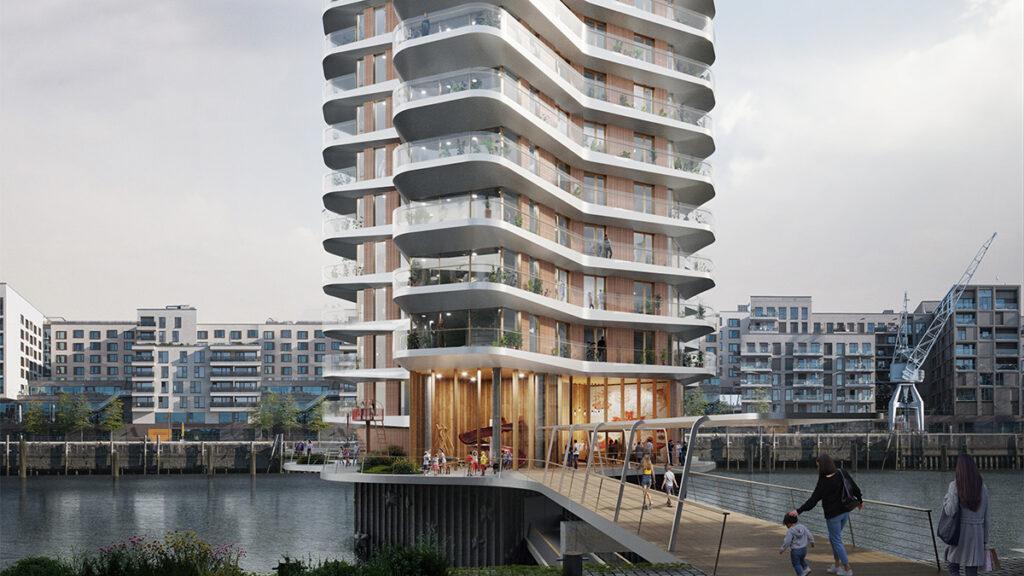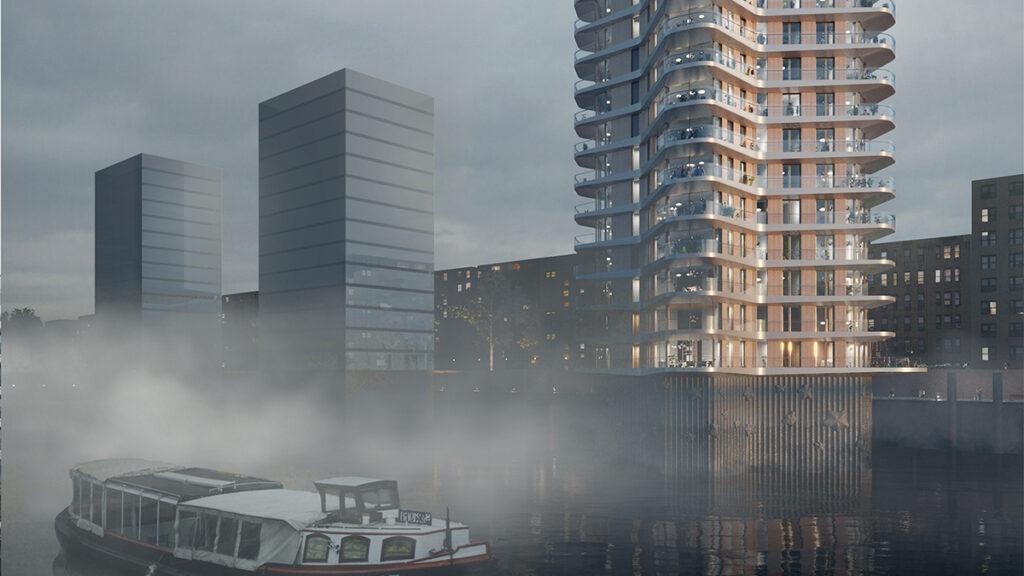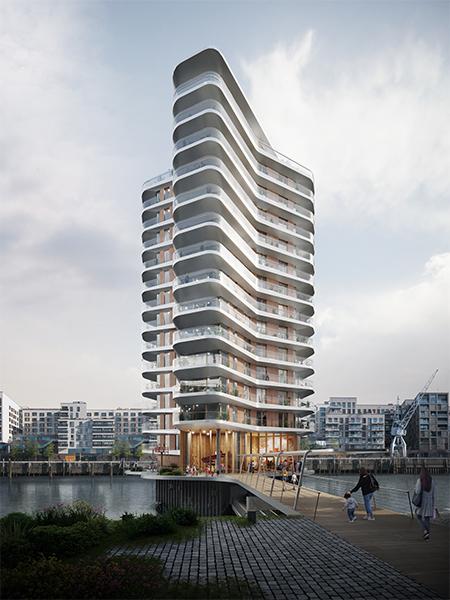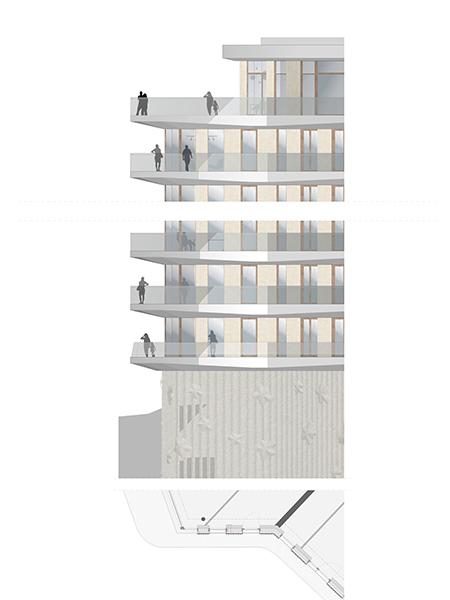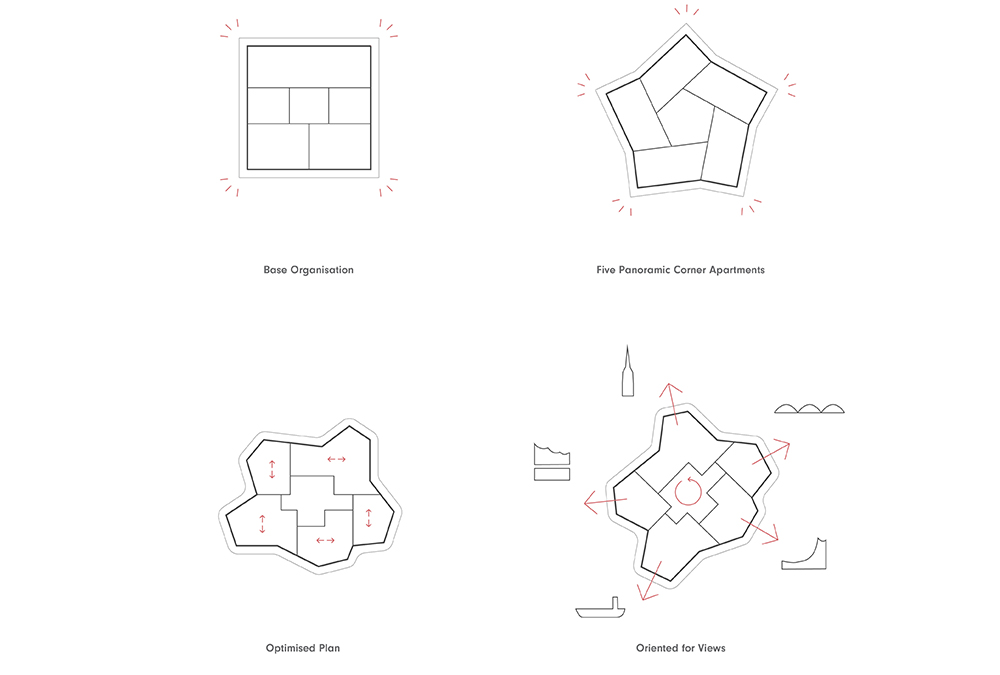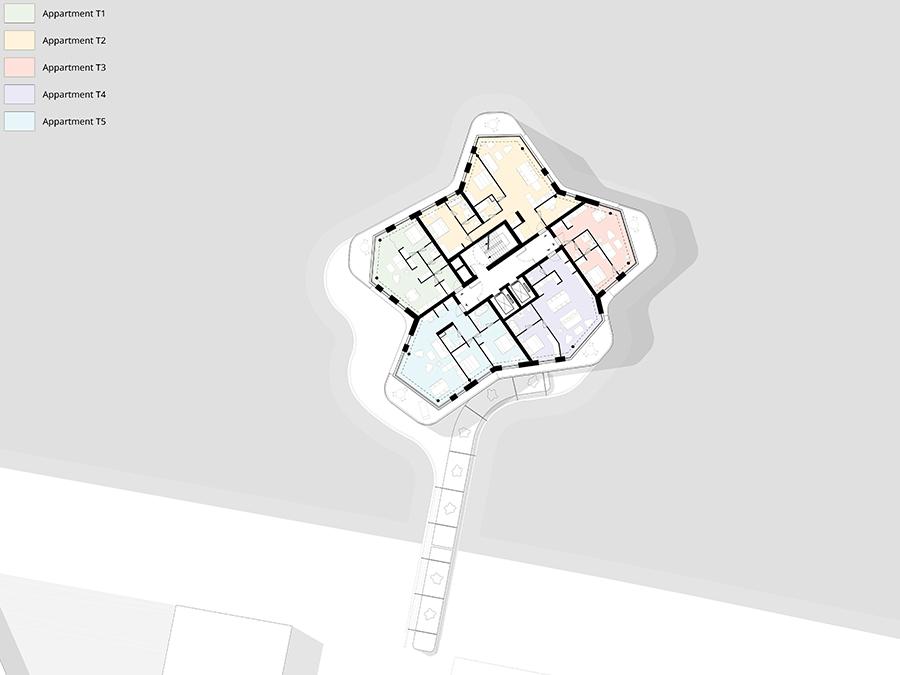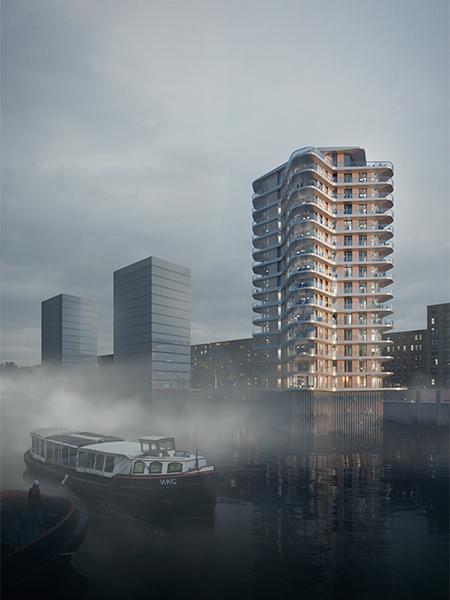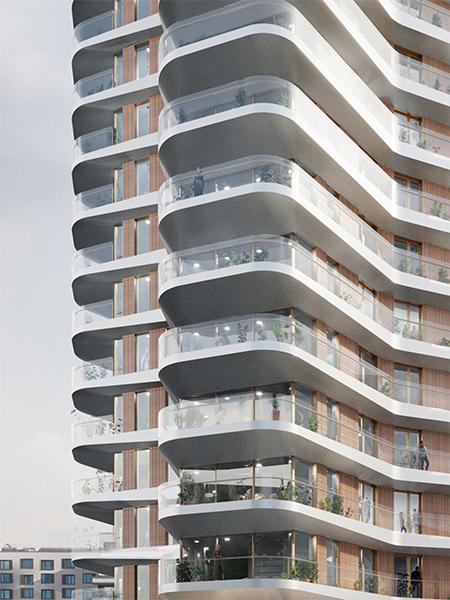The wonderful water house
Sustainable, individual yet blending in perfectly with the ensemble: this is the description given to the “water house” to be built by KCAP on Hamburg’s waterfront. It will be a future-oriented residential tower that will provide the HafenCity with another example of stimulating architecture.
Hamburg’s HafenCity district is a veritable paradise for architecture enthusiasts. It was begun 20 years ago and is still the largest inner-city urban development project in Europe. The district features exquisite buildings like the Elbphilharmonie, Spiegel Verlagshaus and Unilever complex. Not to mention projects like the Null-Emissionshaus, the highest timber building in Germany and the We-House, where vegetables are grown on the roof. In fact, the HafenCity is to serve as a model district for green building. And the new addition by Dutch office KCAP – the sustainable water house – is a perfect fit.
One of three towers
The Starfish project – named because of its shape – is one of three “water houses” being built on Hamburg’s waterfront. Or, to be more precise, in the Baakenhafen quarter, which is part of the master plan developed for the HafenCity by KCAP and German office ASTOC. It is the only building here to be located right next to the water, but that’s not all that is captivating about it.
The three towers are being built next to one another, with the same height and on the same base area in a prominent location. Together with the competition brief, this makes each water house into a kind of “architectural balancing act”. This is because the new ensemble needs to fit with Petersenkai and neighbouring HafenCity landmarks like the concert hall, while still retaining the individual architectural identity of each of the three new buildings.
Complex design brief
As architect and KCAP founder Kees Christiaanse put it: “The individual design for each tower requires a subtle yet recognizable architectural articulation.” A total of 14 participants were invited to three parallel workshop procedures by three clients. The design produced by KCAP together with K+H was chosen for the most westerly of the three sites. The winning team also included Transsolar KlimaEngineering, PML Lange and WTM Engineers. Project developer LIP is commissioning the Starfish water house.
The new residential tower will have an excellent view of the Überseequartier with the Cruise Terminal, Lohsepark, Elbe and the Baakenhafen quarter in the east. Its floor plan consists of a polygon of straight lines and is surrounded by balconies with rounded edges. Apart from the entry levels and penthouse, each floor adheres to the same basic design. This makes the water house look lean and sculptural, but still subtle.
Water house in a starfish form
K+H partner Christian Herbert explains what is behind the extravagant “starfish” form: “The layout is the result of thorough research. It warrants a fine-drawn architectural articulation, an efficient, sustainable building structure, and a maximum of panoramic views for each flat.”
The façade design is classy and subtle too, with the balconies nestled around the building like sculptural rings. These form an interesting outer shell: the water house always looks different depending on which angle you are looking at it from. The alternating floor-to-ceiling windows and solid panels provide an attractive vertical contrast to the horizontal lines of the balconies.
Style and comfort
The base is surrounded by water and has an entrance deck around it, which is reached by a covered bridge. In keeping with the concept, the base shell is decorated with a wave pattern and starfish relief.
An inviting concept
Inside, a two-storey entrance hall provides access to a range of additional functions. These include, for instance, an indoor play area with access to the projected patio deck. There are apartments on the waterside of the ground floor.
The upper storeys consist of apartments of various sizes and floor plans. However, what they all have in common is a structure made up of a predominantly public and a largely private zone. As well as this, all residential areas have projecting balconies and are designed to make the most of the stunning view. The penthouse, which “crowns” the water house, extends over two floors. The recesses in the roof create spacious patios that also shape the silhouette of the building.
Focus on sustainability
KCAP and K+H’s climate and energy concept includes a broad mix of measures, including natural and location-specific ones that render the new building more sustainable. In the entire water house, customized solutions are being used for ventilation, cooling and solar shading – all of which adapt to the location, time of day and time of year.
It also takes into account that energy requirements vary seasonally. This is achieved by means of an innovative storage system that offsets surplus heat in the summer and deficits in the winter.
The photovoltaic modules installed on the roof supply power, while timber construction helps to minimize the carbon footprint and optimize energy needs. Concrete is only used where there is no viable alternative. With their water house, KCAP and K+H are aiming to offer maximum quality of life with minimum energy consumption. The floor plan, balcony shape and highly efficient thermal shell all play a key role here.
New HafenCity attraction
Future users can look forward to a modern and comfortable home in a prime location with a private outside area and plenty of natural daylight. And with KCAP and K+H’s water house, the HafenCity adds yet another architectural gem to the list. One that not only provides a view of Hamburg’s skyline but also of the future of urban living.
